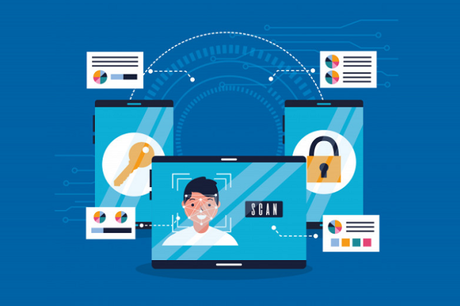
Identity verification is important for any company, but scanners are a means of spreading the virus. Completing the Know Your Consumer (KYC) and anti-money laundering (AML) laws allow organizations to implement contactless authentication systems to control viruses.
Due to the rising fraud rate, the organization needs to be monitored and tackled with a sound KYC solution. The growing sophistication of the rules on AML and CFT makes it necessary for the banking, financial industry, and other industries to expend considerable sums of money, time, and effort on compliance with the rules on AML and CFT.
When financial institutions and lawmaking agencies use new technology to match the current criminal techniques, however, criminals remain more advanced in their criminal activity by that point. Because of the need to upgrade fraudsters continuously, corporations are often challenged to keep cybercriminals ahead of them and to meet their regulators.
Different Identity Verification Methods
Ensurance of a person's identity is an essential process adopted by many financial institutions. Online identity verification can be categorized into various methods. There are many ways to check user identification. Below are five of the most famous ones.
Two-Factor Authentication
Two-factor authentication improves the security mechanism by making it more difficult for attackers to access the computers or online accounts of others, so it is not possible to verify the authentication by understanding the victim's password alone. Two-factor authentication is used for restricting access to confidential applications and records, and 2FA is being more and more used by internet service providers to secure user accounts from hackers having stolen a password database or used phishing attacks to get passwords to customers.
Knowledge-Based Authentication
Knowledge-based authentication, also called KBA, is a method of authentication that indicates that a person who offers identity information really is the exact person. As its name implies, KBA is based on a certain kind of intelligence. Authentication dependent on intelligence is still more sophisticated to retain right-hand access to information.
There are 3 different types of knowledge-based authentication
Database Methods
The online recognition methods for database solutions are one of the most helpful. These solutions use the combination of compartmental trends, social media data, online and offline knowledge to assess the authenticity of an ID. This is a multi-source API-based solution and tests. It will also speed up the process and save financial firms resources so there is no need for manual analysis. Often used for threat surveillance.
Bureau-Based Credit Authentication
Information from one or many of the major credit bureaus is processed in credit bureau based authentication. These businesses store a vast variety of customer credit records, including names, addresses, and social security numbers. Authentication based on credit uses a ranking to build a conclusive match without losing our knowledge. It might however not be able to balance thin credit files like young people and new immigrants with customers.
Credit Bureau-based solutions occur when a financial institution solicits information from one of the big three credit bureaus, which are:
Online Verification
Online authentication hires tools for evaluating whether a government-issued ID is part of the individual, including artificial intelligence, biometrics, machine vision, and human assessment using KYC-AML compliance. This method of authentication generally ensures that users supply an image of themselves with an ID, such that the person on the ID is the same entity carrying the ID.
Online authentication is safe, but it is inconvenient or invasive for some users to upload photos of their face and ID. However, the data is extracted using OCR technology to improve onboarding time within minutes, increase conversions, and remove drop-offs. The process of online ID verification is carried out with a high rate of accuracy and efficiency which is why it is majorly adopted by businesses nowadays.
Conclusion
KYC must be done for their clients by each financial institution or multinational organization. It will help to track people who belong to the scheme. In order to avoid illicit cash movement inside the company, people can also be checked for Anti Money Laundering (AML) documents.
In order to complete the digital identity authentication, a person authenticates the individual identities are an integral part of the business. This enforcement leads to reducing multiple frauds such as identity theft, billing, credit card fraud and prevents firms from paying heavy penalties because fraudsters slip under the trap, but it also aims to save corporations the hour they need to avoid Covid-19 spreading.
